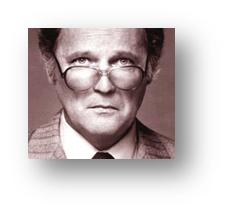By Michael Martin.
Why do patents end up in litigation? Typically, people answer that it is the amount of money at stake. This answer is not wrong. Since the cost of litigation is relatively constant, people should be (and in fact are) more willing to pay lawyers to litigate claims that are very large compared to the cost of litigation. But this is not a full answer to the question. For this answer does not explain why patents specifically should end up in litigation more often. In fact, trillions of dollars in legal rights are exchanged everyday around the globe without litigation. By comparison, the amount of money at stake in patent lawsuits is relatively small.
The Theory of Focal Points
Economist Thomas Schelling is famous for advancing a theory of conflict and cooperation. According to Schelling, even when communication (and hence negotiated agreement) are difficult or impossible, two people can cooperate through a shared focal point. For example, if I told you to meet me in New York City tomorrow but for some reason I couldn’t tell you where and when, we might still meet by going to a famous spot at noon, such as Grand Central Station or the top of the Empire State Building. Our shared vision of these famous spots is a focal point that permits us to coordinate.
The theory of focal points explains why some groups of people fight and some cooperate. When the focal point for a first group is mutually exclusive to the focal point for a second group, conflict emerges. When the focal point is shared or non-mutually exclusive, cooperation emerges. To some extent, all conflict between people can be viewed as a costly renegotiation of focal points.
With Schelling’s theory in mind, let’s revisit the question of patents. What are the focal points for the various parties involved in patent litigation? To simplify the question, suppose there are only two groups involved in patent litigation: “inventors” (or their employers) and “producers” (i.e., the people who sell products or services that practice a claimed invention). Ignore for now the detail that some inventors are also producers, and that some producers are also inventors.
When patents are litigated, the focal point for inventors is on obtaining a large royalty or payment for the right to practice the invention. By contrast, the focal point for producers is on paying a small (or no) royalty or payment to practice the invention. Although both inventors and producers seek profit, at the point in time when patents are litigated, these focal points are mutually exclusive because (at worst) both have incurred costs of R&D for developing the invention. Patent litigation thus becomes a zero sum game.
The Focal Point of Profit
At first glance, therefore, one might think that inventors and producers are doomed to conflict. Before rushing to that conclusion, however, it’s worth noting that in some broader sense, at least, inventors and producers share a focal point — namely, profit.
Profit is an unusually broad focal point. As Adam Smith is famous for pointing out, the voluntary exchange of goods and services creates profit. With profit the focal point, the problem of avoiding conflict between inventors transforms into a problem of identifying and promoting the circumstances in which the voluntary exchange of inventions for cash can take place between inventors and producers.
If such voluntary exchanges never occurred, we might have reason to doubt whether conflict between inventors and producers could ever be avoided. Fortunately, such exchanges do, in fact, occur. Thus, it can be inferred that the conflict arises over how what is exchanged (services and patent rights) should be valued.
Again, this might seem puzzling at first because, at least in principle, there should be no difference in how value is measured. At least within the United States, the same rules for accounting and reporting financial statements apply to both inventors and producers. In principle, the inventors and producers should be able to compare their financial statements, and reach some agreement over the value of an invention.
But since this never seems to occur, the most reasonable inference seems to be that the conflict arises from a difference in how we interpret accounting and financial statements. In fact, it is precisely here that the focal points of inventors and producers diverge. Having had the rare opportunity of working both in patent law and accounting, it has been my privilege to be one of the first to have noticed this. In short, a better theory of accounting would help resolve conflicts over patented inventions and restore a cultural norm of cooperation within patent law. Astute readers should note that, in addition to patent law, Venice was the birthplace of double-entry accounting in the 15th century.
Problems with the Static Picture of Cost Accounting
As described by William H. Waddell and Norman Bodek in Rebirth of American Industry, the theory behind the most dominant method of accounting (which is called “cost accounting”) was developed at General Motors in the early 20th century by Alfred Sloan, Pierre DuPont, and Donaldson Brown. The relevant detail about this theory is that it was designed to measure (and hence manage) return on investment (ROI). To that end, the paradigm that Sloan, DuPont, and Brown had in mind in developing their rules for accounting was a static picture. Specifically, their picture was of what the corporation would be worth in liquidation.
With the picture of the corporation in liquidation in mind, it is easier to understand why so many things that we might intuitively imagine to be costs are instead treated as assets under cost accounting. For example, under the cost accounting system, unsold inventory is reported as an asset. Cost accounting assumes that the inventory could be sold at cost in liquidation. The reporting ignores, of course, the fact that unsold inventory will incur expenses. More importantly, it ignores that what’s unsold before liquidation is less likely to sell at cost in liquidation.
Under the cost accounting system, IP is called an asset on balance sheets. Again, the assumption is that patents can be sold at cost during liquidation. Again, this assumption begs several important questions. Perhaps most importantly is the question of why, if the IP is so valuable, it could not be used to attract financing or revenue, thereby avoiding liquidation. There were (and are) reasonable answers to that question when debt or equity are unavailable for reasons that have nothing to do with the demand for the patented invention. But its salience suggests that there might be better ways to measure the value of IP.
Whereas all patents cost something to procure, market demand only emerges for a handful of all patented inventions. Thus, the system of cost accounting has given managers and investors the perverse incentive to aggregate thousands of patents, inflating their balance sheets, much like we saw prior to the subprime mortgage debacle. Firms invest billions of dollars in new technology, spend millions on patent portfolios, inflating their asset accounts — all before attracting a single customer! Not to be outdone, when the corporation fails, the cost accounting system encourages us to sell the patents at auction, and let third-parties extract whatever they can from the legal rights. On my view, the system of cost accounting, coupled with the shortage of patent lawyers who really understand technology, are responsible for the emergence of the worst kind of patent trolls.
Dynamic Accounting and the Promise of Cooperation
Fortunately, there is now a light at the end of the tunnel. In fact, many corporations have shifted away from the static picture of corporations inherent in cost accounting to a more dynamic picture. Lean accounting, in fact, was practiced at Ford Motor Company almost 100 years ago, before Ford was eclipsed by the success of General Motors. It turns out that cost accounting is a perfectly fine system of accounting when demand is basically infinite relative to the cost of supply. If the market is never cleared, then the corporations that use cost accounting will end up reporting higher return on investment (ROI) than the corporations that use lean accounting. Lean accounting is an inherently more stable mechanism for promoting growth within a corporation in part because it does not tradeoff short-term gains in income against long-term sustainable growth. But once GM started doing it, everybody else in the automobile industry, and eventually the entire economy, had to follow.
Under a dynamic theory of accounting, IP is more like equity than it is like an asset. That’s because the primary value of patent rights is in promoting invention and collaboration, both of which are dynamic because people are dynamic. Elsewhere I have explained how inventors are customers. Within the cycle of growth of corporations, inventors and customers are the source of information about demand. It is no accident that unmet need was considered by Judge Learned Hand to be the most important of the secondary considerations on obviousness.
By contrast, assets are static. By adopting rules for reporting and managing the IP that are more consistent with the actual mechanism whereby it increases profit, we will in turn discourage wasteful conflicts. A very important corollary to this is that stronger patent rights would be beneficial in promoting collaboration and avoiding conflict. Strong property rights discourage people from litigating what could be solved through negotiation at an earlier point in time. As Robert Frost noted, “Good fences make good neighbors.” With a change to the accounting rules, these early negotiations will happen more often.
Finally, let me emphasize that changes to financial statements need not be dramatic. For example, the simple addition of average daily debit and credit flows for each balance sheet account would permit the shift in managing and investing that I’m advocating here. Since most accounting is now done by computers, this kind of change is actually very cheap. The value of inventions could then be measured easily by comparison between the average daily debit and credit flows before and after an invention had been implemented. Suddenly, inventors and producers have a numerical way to measure the value of an invention.
[Michael Martin is a former in house counsel and founder of Venetian Capital Management.]
 “We need strong patent laws in the United States to protect our ideas, to protect our inventors, to protect our jobs, from infringers. For the past several years, many in Congress have been working hard to water down our patent laws, trying to make it easier for copiers to steal ideas. As an Intellectual Property Executive, I know the impact of these changes on the Massachusetts economy, and I will fight efforts to weaken our protection in the global economy.”
“We need strong patent laws in the United States to protect our ideas, to protect our inventors, to protect our jobs, from infringers. For the past several years, many in Congress have been working hard to water down our patent laws, trying to make it easier for copiers to steal ideas. As an Intellectual Property Executive, I know the impact of these changes on the Massachusetts economy, and I will fight efforts to weaken our protection in the global economy.”  Precedential:
Precedential:  Judy Jarecki-Black from Merial Limited has been named the “Best Chief IP Counsel” by 2008″ by Global Counsel Awards 2008. Glacéau was awarded the “Best IP Counsel Team.” [
Judy Jarecki-Black from Merial Limited has been named the “Best Chief IP Counsel” by 2008″ by Global Counsel Awards 2008. Glacéau was awarded the “Best IP Counsel Team.” [ against another party. In this case, Judge Guzman held that the patentee could not re-argue the construction based on collateral estoppels / issue preclusion. [
against another party. In this case, Judge Guzman held that the patentee could not re-argue the construction based on collateral estoppels / issue preclusion. [